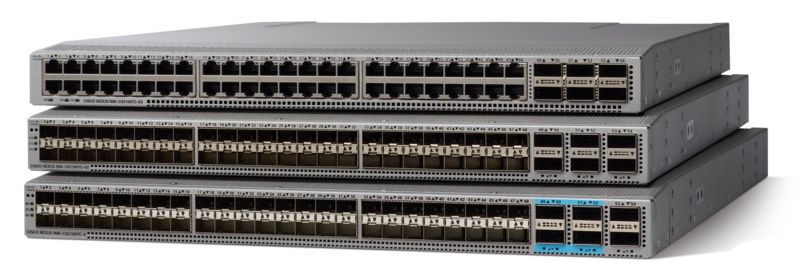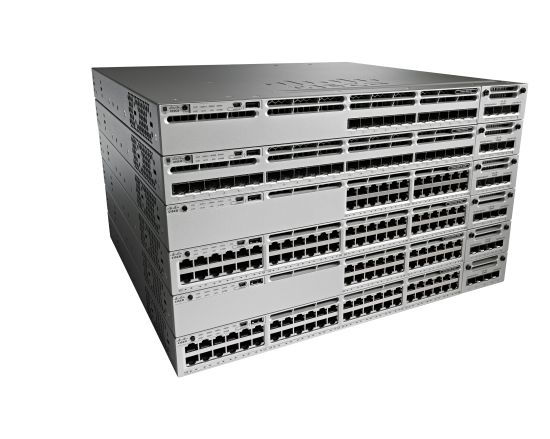A datacenter switch is a crucial component of a datacenter’s networking infrastructure, designed to connect servers, storage devices, and other networking equipment within a datacenter environment. These switches play a vital role in facilitating communication between various devices, enabling data transfer, and ensuring high-performance connectivity. Here’s an in-depth explanation of what a datacenter switch is and how it functions:
Overview:
A datacenter switch is a high-performance networking device that operates at the data link layer (Layer 2) and sometimes at the network layer (Layer 3) of the OSI model. It is specifically engineered to handle the heavy traffic demands and stringent requirements of modern datacenters, where reliability, scalability, and low-latency communication are paramount.
Functionality:
Packet Forwarding: The primary function of a datacenter switch is to forward data packets between connected devices based on their MAC (Media Access Control) addresses. Each device in the datacenter is typically connected to a switch port, and the switch uses MAC address tables to efficiently route packets to their intended destinations.
Layer 2 Switching: Datacenter switches excel at Layer 2 switching, where they intelligently forward Ethernet frames within the same network segment or VLAN (Virtual Local Area Network). This allows for efficient communication between devices within the same broadcast domain.
Layer 3 Routing (in Layer 3 Switches): Some datacenter switches also support Layer 3 routing capabilities, enabling them to route traffic between different subnets or VLANs within the datacenter. This functionality is essential for interconnecting servers and devices across multiple network segments.
High Port Density: Datacenter switches typically offer a high port density to accommodate the large number of servers and networking devices present in modern datacenter environments. They may feature dozens or even hundreds of ports, including Ethernet ports with various speeds such as 1 Gigabit, 10 Gigabit, 25 Gigabit, 40 Gigabit, and 100 Gigabit Ethernet.
Low Latency: To meet the demanding requirements of real-time applications and high-performance computing workloads, datacenter switches are engineered to minimize packet processing delays and ensure low latency communication between devices.
Redundancy and High Availability: Datacenter switches often incorporate redundancy features such as hot-swappable power supplies, modular designs, and support for link aggregation (e.g., LACP – Link Aggregation Control Protocol) to enhance network reliability and availability.
Quality of Service (QoS): Many datacenter switches support Quality of Service (QoS) mechanisms to prioritize certain types of traffic, ensuring that mission-critical applications receive the necessary bandwidth and network resources.
Advanced Features:
Virtualization Support: Datacenter switches often support network virtualization technologies such as VLANs, VXLAN (Virtual Extensible LAN), and NVGRE (Network Virtualization using Generic Routing Encapsulation) to enable flexible network segmentation and resource isolation.
Software-Defined Networking (SDN) Integration: Some modern datacenter switches are compatible with SDN architectures, allowing for centralized network management, programmability, and automation through SDN controllers and APIs.
Security Features: Datacenter switches may include security features such as Access Control Lists (ACLs), Port Security, and DHCP Snooping to mitigate security threats and enforce network policies.
Conclusion:
In summary, a datacenter switch is a critical networking device that forms the backbone of datacenter infrastructure. With its high performance, scalability, low-latency communication, and advanced features, the datacenter switch enables efficient connectivity and seamless operation of modern datacenters, supporting a wide range of applications and workloads.

1
Cisco Nexus 9000 Series

Cisco’s Nexus 9000 series switches offer high performance, scalability, and advanced features tailored for datacenter environments, including support for Cisco’s Application Centric Infrastructure (ACI).
2
Arista Networks 7000 Series

Arista’s 7000 series switches are known for their low-latency, high-density, and scalability, making them popular choices for cloud-scale datacenters and high-performance computing environments.
3
Juniper Networks QFX Series

Juniper’s QFX series switches provide high-density 10/25/40/100 Gigabit Ethernet interfaces, advanced features for datacenter fabrics, and support for Junos operating system.
Datasheet:
QFX5110 10/40GbE switches:
qfx5110-ethernet-switch-datasheet.pdf (juniper.net)
QFX5120 line offers 1/10/25/40/100GbE switches
Datasheets:
QFX5200 line offers line-rate, low-latency 10/25/40/50/100GbE switches
qfx5200-switch-datasheet.pdf (juniper.net)
QFX5210 line offers line-rate, low-latency 10/25/40/100GbE switches
qfx5210-switch-datasheet.pdf (juniper.net)
QFX5220 line offers up to 400GbE interfaces switches
4
Extreme Networks SLX Series

Extreme Networks’ SLX series switches offer cloud-scale architecture, programmability, and automation capabilities, making them suitable for modern datacenter deployments.
5
Dell EMC PowerSwitch Z-Series

Dell EMC’s PowerSwitch Z-Series switches offer high-density 25/100 Gigabit Ethernet interfaces, programmability, and support for software-defined networking (SDN) solutions.
Datasheet:
High-performance, high-density open networking 40/100GbE multi rate aggregation switch
dell-emc-networking-z9264-on-spec-sheet.pdf (delltechnologies.com)
Datasheet
High-performance, high-density open networking 100/400GbE switch
dell-emc-networking-z9332f-spec-sheet.pdf (delltechnologies.com)
Datasheet
High-performance, high-density open networking 100/400GbE switch
dell-emc-powerswitch-z9432f-spec-sheet.pdf (delltechnologies.com)
6
Cisco Nexus 3000 Series

Cisco’s Nexus 9000 series switches offer high performance, scalability, and advanced features tailored for datacenter environments, including support for Cisco’s Application Centric Infrastructure (ACI).
Datasheet:
Nexus 3016
Cisco Nexus 3016 Switch Data Sheet – Cisco
Nexus 3048
Cisco Nexus 3048 Switch Data Sheet – Cisco
Nexus 3064
Cisco Nexus 3064-X, 3064-T, and 3064-32T Switches Data Sheet – Cisco
Datasheet:
Nexus 3100-V
Cisco Nexus 3100-V Platform Switches Data Sheet – Cisco
Nexus 3132
Cisco Nexus 3132Q, 3132Q-X, and 3132Q-XL Switches Data Sheet – Cisco
Nexus 3132C-Z
Cisco Nexus 3132C-Z Switches Data Sheet – Cisco
Nexus 3164Q
Cisco Nexus 3164Q Switch Data Sheet – Cisco
Nexus 3172
Cisco Nexus 3172PQ, 3172TQ, 3172TQ-32T, 3172PQ-XL, and 3172TQ-XL Switches Data Sheet – Cisco
Nexus 31128PQ
Datasheet:
Nexus 3232C
Cisco Nexus 3232C Switch Data Sheet – Cisco
Nexus 3264Q
Cisco Nexus 3264Q Switch Data Sheet – Cisco
Nexus 3264C
Datasheet:
Nexus 3408-S
Cisco Nexus 3408-S Switch Data Sheet – Cisco
Nexus 3432D
Cisco Nexus 3432D-S Switch Data Sheet – Cisco
Nexus 34108YC & 3464C Programmable Switches
Cisco Nexus 34180YC and 3464C Programmable Switches Data Sheet – Cisco
7
HPE FlexFabric Comware Series

Hewlett Packard Enterprise’s FlexFabric series switches provide high-performance, scalability, and support for advanced datacenter features such as Virtual Extensible LAN (VXLAN) and network virtualization.
Quickspecs
HPE 5920
HPE FlexFabric 5920 Switch Series
HPE 5930
HPE FlexFabric 5930 Switch Series
HPE 5940
HPE FlexFabric 5940 Switch Series data sheet
HPE 5945
HPE Networking Comware Switch Series 5945
HPE 5960
HPE Networking Comware 5960 Switch Series
HPE 5980
HPE Networking Comware Switch Series 5980
8
Mellanox Spectrum Series (nvidia)

Mellanox’s Spectrum series switches feature high-speed Ethernet connectivity, low-latency, and advanced features optimized for modern datacenter architectures, including support for RDMA over Converged Ethernet (RoCE).
Models and Datasheet:
NVIDIA SPECTRUM SN2000 | DATASHEET
SN2010- 18 SFP28 25GbE + 4 QSFP28 100GbE
SN2100 – 16 QSFP28 100GbE
SN2201 – 48 RJ45 + 4 QSFP28 100GbE
SN2410 – 48 SFP28 25GbE + 8 QSFP28 100GbE
SN2700 – 32 QSFP28 100GbE
Models and Datasheet:
NVIDIA Spectrum SN3000 Series Switches | NVIDIA (widen.net)
SN3420 – 48 SFP28 25GbE + 12 QSFP28 100GbE
SN3750-SX – 32 QSFP56 200GbE
SN3700C – 32 QSFP28 100GbE
SN3700 – 32 QSFP56 200GbE
Models and Datasheet:
NVIDIA Spectrum SN4000 Series Switches
SN4410 – 24 QSFP28-DD 100G + 8 QSFP-DD 400GbE
SN4600C – 64 QSFP28 100GbE
SN4600 – 64 QSFP56 200GbE
SN4700 – 32 QSFP-DD 400GbE
9
HPE Aruba Networking CX Series

Simplify the complexities of deploying and managing modern enterprise networks with AI-powered automation and built-in security delivered by network switches that scale from edge to the cloud.
Models and Datasheet:
CX8100
HPE Aruba Networking CX 8100 Switch Series – Datasheet (arubanetworks.com)
CX8325
Aruba CX 8325 Switch Series Data Sheet (arubanetworks.com)
10
Brocade VDX Series

Brocade, now part of Broadcom/Extreme offers the VDX series switches with features such as low-latency, high-density 10/25/40/100 Gigabit Ethernet interfaces, and support for TRILL-based fabric architectures.